Working through the rest of the Apple haul: Monitors, cards, software and literature
Having dealt with the Apple (or clone) computers themselves, this was the day I worked through the rest of the haul namely the accompanying monitors, cards, software and the literature.
1. Monitors
The 4 monitors were in a sad state. Like the computers, they had their fair share of dust, grime, dirt and mouse droppings. Photo 1 shows three of them (I'd started cleaning the other one before I remembered to take a before-and-after photo). The spade in the background is fitting ...it looks like this hardware has just been dug up!
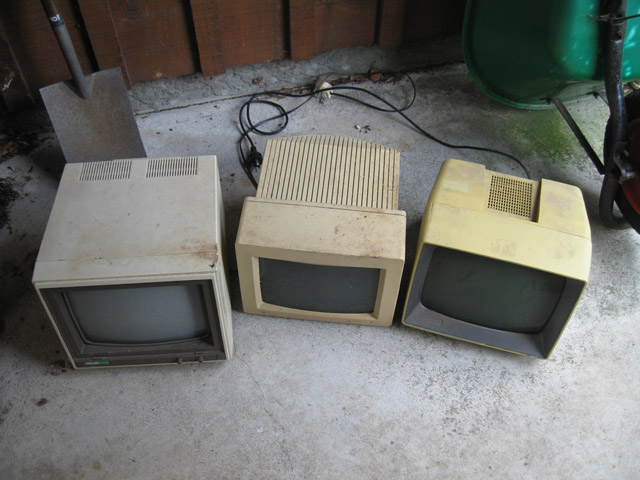
Photo 1. Grubby old monitors
Would they work?
I plugged each one in to test. Remarkably, they all seem to go, showing a raster when the brightness was turned up! I couldn't test the RGB monitor (the one in the middle) with a machine as I didn't have an RGB cable. It didn't explode when I turned it on though.
An hour or two of JIF, glass cleaner and elbow grease and these monitors were barely recognisable. The three I could test (two monochrome, one colour) all worked just fine when wired up to an Apple clone. Here are all four in Photo 2.
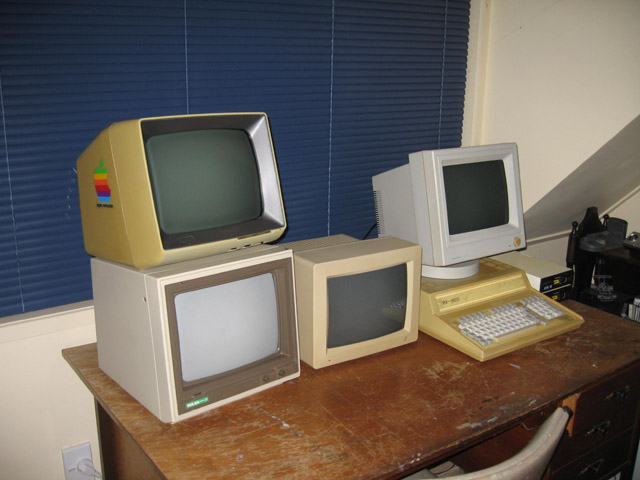
Photo 2. The four donated monitors, in a somewhat cleaner state
2. Cards
The haul came with a box of interface cards. I had a chance to look through these today. Wow, there was everything there. Memory expansion, Z-80 cards, a serial card, disk interfaces, 80-column cards, a parallel card, a PAL video card, a SCSI card, a Mockingbird sound card and a few other ones I couldn't identify. There is also an RGB card, which isn't shown here.
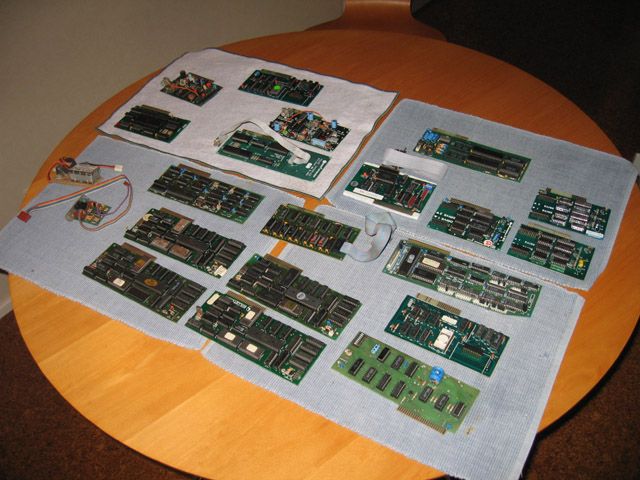
Photo 3. Interface cards for the Apple IIs
Once I get the new chips in the remaining units (The Platinum and Europlus), I'll jazz a few of the machines up with these cards.
3. Software
The software came in three large boxes. It consisted of 5 caddies and one plastic bag of disks, and a huge amount of boxed titles. I was impressed with the latter. Bruce (who donated this material) must have been an avid game player. Some of the boxes were still sealed!
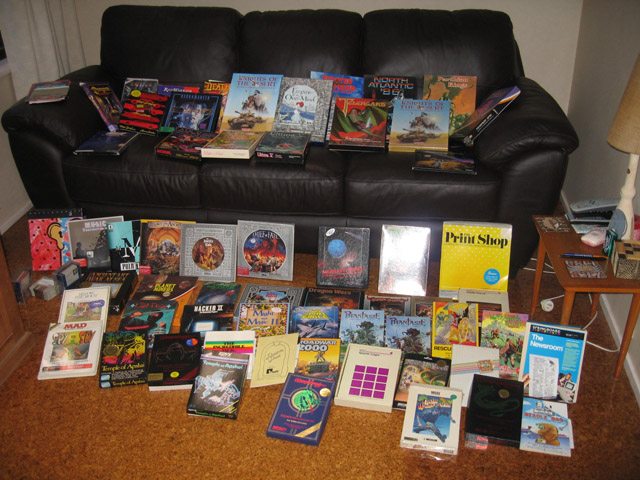
Photo 4. Software titles galore
The stack of disks were not such a pretty sight. Although free of mouse droppings I suspect they had had their fair share of exposure to damp and cold. Not wanting another episode of clogged drives anytime soon, I went through all the disks and visually inspected them. This doesn't always detect disks where the media is sticky but it does detect those with obvious defects. Fungal growth was common in this lot, as you can see by Photo 5. This shows what I was looking for, and the number of disks that had obvious surface damage.
Not an insignificant amount!
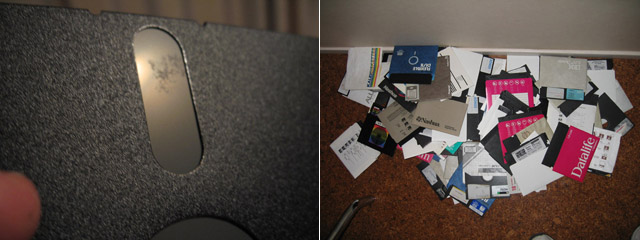
Photo 5. The reject disks
However, despite this cull, a substantial number of disks remain. Enough to fill two double and two single caddies. Should be more than enough!
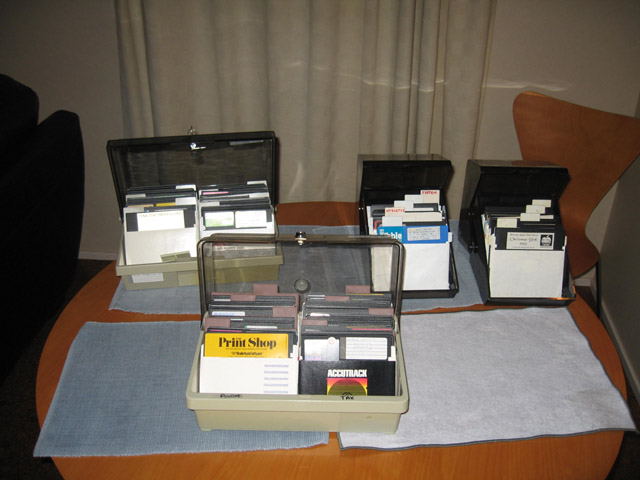
Photo 6. The remaining disks
One bonus was the amount of System or original APPLE software I found amongst the disks. I like to have the original DOS or installation software for any units I have. I'm not sure if the disks actually work (I got my working copy of DOS 3.3 off the Net), but it's good to have them nevertheless (Photo 7).
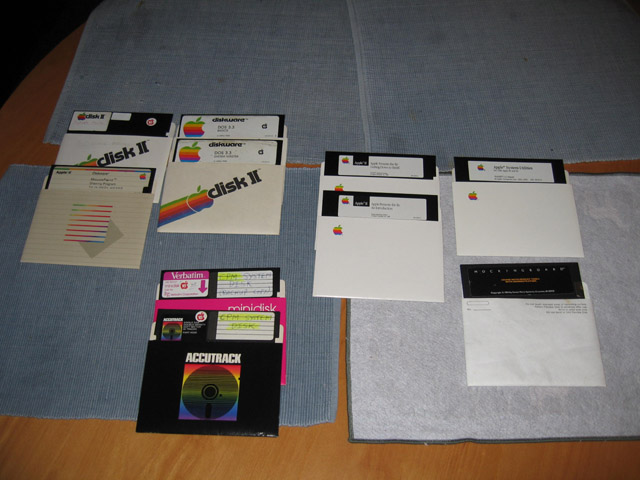
Photo 7. Original APPLE Disks (and copied CP/M ones)
Apart from a few working disks, all the software has now been stored away in a dry, cool closet together with the programs for all my other units. That closet is now getting crowded!
4. Books and Manuals
As with the original disks, I also like to get hold of original manuals and literature for display purposes. They are also useful for figuring out how the machines are suppose to work!. The haul delighted in this regard also. All the standard DOS and computer manuals were there, along with some classic books (Photo 8).

Photo 8. Books and Manuals
The thickest manual was for the Apple IIGS. Pity about that as the GS met its demise through a battery leak. Anyway, I'll hold onto that manual. Reading up about the GS has got me interested in the machine and I might see if I can pick one up cheap one day. I've got the screen, and I've kept the keyboard and ROM chips too. Now I just need the motherboard and case.
There was also a box full of magazines called "Nibble". I'm not sure what I'm going to do with those. Actually, they can make entertaining reading so I'll probably keep them, at least for now.
5. Two other computers
After processing the above, two items remained on the delivery table in my garage. A Bondwell computer and a gray laptop with no markings or labels whatsoever.
When I opened the Bondwell I discovered it wasn't a computer at all! It was actually just a SCSI drive and a power supply in a computer case. I removed the drive and will dump the rest.
The laptop appears dead. There was no power supply, but there was a manual. That indicated a Mac Powerbook power supply (7.5v, 2 A) should do the job. The drive spins but there is no sign of life on the screen. Although attractive looking (it actually looks like a Powerbook) it's a generic upbranded 386 model called "Notebook SX", so doesn't inspire me much. Unless I can get it going it will go to the recycling centre too.
6. Reflections on the haul
The Apple delivery has kept me busy for a number of weeks now. However, it's been worth it. I've learnt a lot about Apple IIs and it's given me a lot of new gear. Apart from labeling and packing up what I've processed so far, the only remaining task is to add the chip replacements to the Platinum and the Europlus. This will certainly fix the Platinum and I'm hoping the chip I've ordered will fix the issue in the Europlus too.
I'll take a picture and put up a brief blog when these final two units are working, and take a group photo of the whole resurrected family. (-:
Tez
20th September, 2008
[Edit: 4th April, 2009. The Europlus and the IIe Platinum are now working.]
| Tweet |